Disconnected.
Investigating the underlying racial disparities within the Iowa City community.
Introduction
It’s a new day at school and you walk in the building with a pair of new shoes and a fresh haircut, a bounce of confidence with every step you take.
Suddenly, someone makes fun of you, and you feel hurt—maybe for a few minutes, or even a whole day.
The next school day, you vow not to wear those shoes again, and you set up another hair appointment. You’re able to change so you won’t be targeted or hurt again. 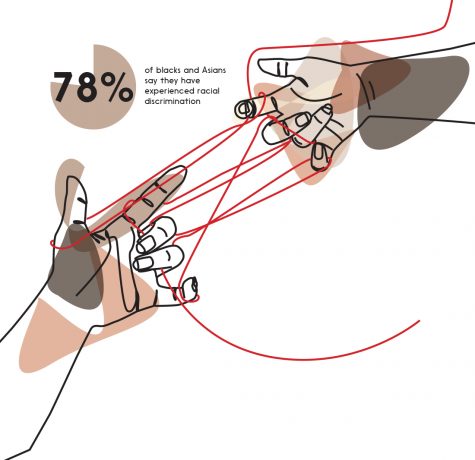
But what about skin color? What about a native language, or something that is essential to who you are?
For minorities in the U.S., their race, ethnicity and culture is often a target for racism and bias, yet something they are never able to change.
The WSS investigates just how prevalent the cultural and societal implications of racism still are across the ICCSD community and in modern society.
Racial Profiling & General Experience
As social studies teacher Amira Nash walked down the hallway, nothing was out of the ordinary. On the way to her classroom, she didn’t expect that seconds later, her African-American ethnicity would suddenly be brought to attention. Being surrounded by other white students, she never thought that as a teacher she’d be the only one accused of cutting class.
“I was walking down the hallway. A teacher who obviously didn’t know me yelled at me and said, ‘Can you walk any slower to class?’ It was just directed at me and not to the other students,” Nash said. “I think the saddest thing was that when I approached the teacher later and introduced myself, they didn’t understand that they made a mistake.”
What Nash had just experienced is a term called ‘racial profiling,’ which is defined as the act of targeting a person of a certain race on basis of assumed characteristics of a racial group rather than on individual suspicion.
Rather than outright prejudice, Nash believes that the majority of racial profiling comes from a sense of ignorance.
“I think everyone’s at a different level. There’s a lot of people that will understand that [what happened to me] was an issue, and there will be a lot of people that don’t understand why that’s an issue,” Nash said.
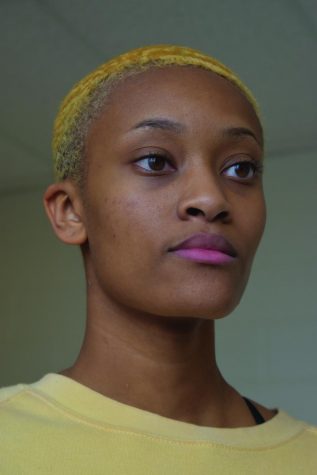
Ahjiana Walker-Garcia, a black student, has faced racial profiling both in and outside of West.
Ahjiana Walker-Garcia ’20, a black student, has experienced the same sense of ignorance—only this time, coming from someone she’s close with.
During her freshman year, one of Walker-Garcia’s friends at the time, who is white, casually said the N-word.
Understanding that the word carried a deep-rooted history of her race, Walker-Garcia fell into an uncomfortable situation.
“This was disappointing, because it’s not a great word—but she’s also my friend,” Walker-Garcia said. “She’s like, ‘Oh my god Ahji, I’m so sorry, I didn’t mean to. My brothers say it all the time.’ But even if you didn’t mean to, you still fixed your mouth to say so.”
What further disappointed Walker-Garcia was her friend’s lack of willingness to learn what she had done wrong. As a result, Walker-Garcia broke off their friendship.
“It gets kind of hard if you’re not going to be open minded. If you were like, ‘Why do you feel this way?’ and sparked a conversation and tried to learn instead of being so defensive, then that would be okay,” Walker-Garcia said.
However, Walker-Garcia finds a clear distinction between being ignorant and racist, and believes that her previous friend was not the latter.
“It’s hard for me to just say, ‘People are racist,’ because we don’t really talk too much about racism,” Walker-Garcia said. “I can’t be mad at white people or anyone else because they’ve never really understood or felt what it is like to be a minority.”
On the other hand, Walker-Garcia believes she still has been racially profiled at West within the classroom and targeted specifically by one of her teachers. She first noticed major profiling when, due to her testing anxiety, she was able to take tests outside of class while being monitored by other teachers.
As her academic performance in this class improved, her teacher intervened.
“I started doing so good [on tests]—like A’s and B’s. But once, when I took a test, [my teacher] wrote an email to one of the teacher [monitors] and she’s like, ‘You guys are helping her too much with the test, she’s doing too well now,’” Walker-Garcia said. “But I hadn’t been getting help on the test. I’ve been paying attention in class and getting the stuff done. I didn’t talk to a teacher, not one time.”
In frustration, Walker-Garcia had a meeting to discuss what had happened with the teacher, her mother and the counselor, which led to discussion about Walker-Garcia’s behavior in class.
“[The teacher] was like, ‘Yeah I’ll be honest, she’s on her phone this many times, but I’m not watching her.’ I was like, ‘So did you make a log? Did you see how many other people were on their phones?’ And she was like, ‘Nope, just you.’ Oh, so just me,” Walker-Garcia said.
Under the same teacher, Walker-Garcia noticed just how much it benefited another student to be white in the class. With only a few more days left in the trimester and one more test left, the white girl was failing the class.
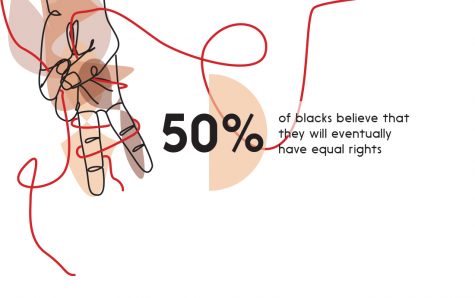
“There was no possible way that she was going to be able to pass the class. No way possible. But the next year, I see her in my class. I passed the class and moved up, but how did she?” Walker-Garcia said. “I asked her and she was like, ‘Oh, they just let me.’ And the same teacher just thought I was cheating on my test?”
As Walker-Garcia completes senior year and moves beyond high school, she knows racial profiling won’t just be a one-time situation. However, she is determined to rise beyond the challenge.
“I’m definitely used to [racial profiling], but do I let it get me down? No, I’m better than that. This is just how it is here, and I gotta make the best out of it,” Walker-Garcia said. “I’m not just going to get all depressed because people don’t like me because of my skin color. I just gotta keep doing me.”
Stereotypes
Imagine walking into a room ready to learn, but subtly noticing there’s one thing about you that makes you different from the rest.
Your skin color.
Living in Iowa, which has been deemed the sixth whitest state in the U.S. according to the World Population Review, this has been an all too common situation for a number of people of color in the community. In an effort to try to fit in, with an unconscious need to look more ‘white’, many have discovered that combating deeply-rooted stereotypes has been the heart of the problem.
“There were a lot of times when I was going through the teacher programs where I had a lot of people say to me, ‘You might not want to be too black in that space,’” Nash said. “It was mostly a hair issue. ‘You won’t get the job if that’s what you’re going to look like; you need to straighten your hair,’ just so as not to be perceived as too black.”
With a negative connotation formed about one’s culture, which increasingly more students of color are encouraged to hide, Nash believes that this societal norm can easily lead to the stereotype threat for many students. Defined as the risk of confirming negative stereotypes about an individual’s racial, ethnic, gender or cultural group, the stereotype threat is what Nash believes has limited the potential of many students.
“We have a really big push right now to get more students of color into upper level classes. Even though [students of color] get there, a lot of students are still feeling like, ‘This still isn’t my space, and I don’t belong here,’” Nash said.
Isabella Hoeger-Pinto ’20, a Costa Rican student, has noticed this impact her first day of freshman year.
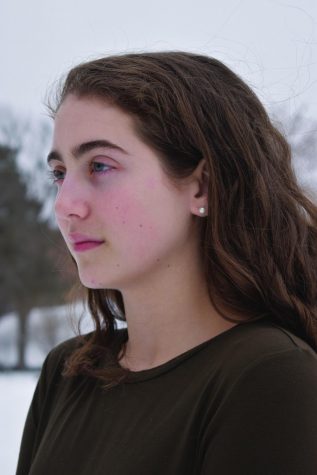
Isabella Hoeger-Pinto identifies as a Costa Rican student.
“You already notice that it’s separated—minorities are in these classes, white students are in these classes, and it starts right from the beginning,” Hoeger-Pinto said. “What’s really sad about that is in elementary you go into a class and it’s literally a rainbow. Now [at West], it’s just a couple shades here, a couple shades there, and that’s disheartening.”
Noticing a trend of mostly white and Asian students in upper level classes and more black and Latino students in regular level classes, Latina student Fernanda Perez ’21 remembers how isolating and revealing it was at first to be an AP student.
“I realized I was the only Latina, and mostly all my peers were white and Asian. I just felt like, ‘Wow, not a lot of Latinos push themselves to take hard classes,”’ Perez said.
Both students have witnessed the same situations outside of the classroom, such as in extracurriculars.
“If you ever go to a football or basketball game … there’s only white and some black, but I don’t see a lot of Latinos or Asians doing that,” Perez said.
To combat this issue and increase representation, Perez agrees with Nash that it’s necessary to have students of color challenge the stereotypes that exist, not reaffirm them.
“While a lot of students don’t have the same opportunities that maybe other white kids or other races may have, I just feel like people of color are so scared, and they think, ‘Oh, I’m gonna do really terrible at this class, only smart people can do it,’” Perez said. “I feel like that is totally wrong because I’m not that smart, but hey, I’ve passed my classes being one of the only people of color in my classes.”
In the face of isolation, Perez encourages other people of color to face the stereotype threat head-on and follow the footsteps of her journey for guidance.
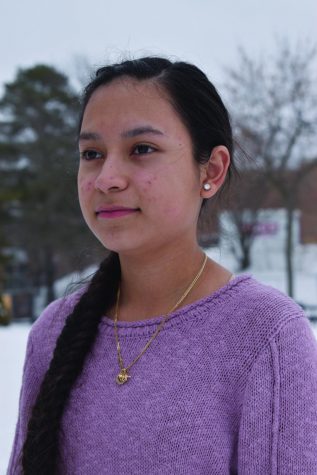
Fernanda Perez identifies as Latina.
“At first, I felt isolated from everyone else, but then I was just like, ‘No, I’m not gonna just discourage myself because I’m the only one. I’m going to prove that I can do it,’” Perez said.
Ignorance & Bias
When thinking of racism, many times explicit racism comes to mind rather than structural racism; a system that provides benefits for certain individuals while putting others at a disadvantage. While it is one of the most prevalent forms of racism, it is often more covert. According to social studies teacher Travis Henderson, it primarily exists in institutions such as education and housing. He believes that structural racism poses a large threat in society and should be receiving more attention.
“The fact that there aren’t that many teachers of color is evidence of structural bias. The fact that more of our students with privilege who are white take our more advanced classes like AP classes, PSEO classes, is evidence of structural racism,” Henderson said. “It’s not to say that anyone explicitly sat down and said, ‘I’m going to make a racist decision to not let these kids into these classes.’ It’s not as explicit as that … but you could see evidence of it if you just basically take half a second to look around.”
Harmful consequences result from institutional bias, like achievement gaps at schools. According to the National Center for Educational Statistics, the white-black reading gap for eighth graders in 2017 was 25 points on tests. Though the gap has been slowly closing in some states, others have seen little progress or even an increase.
Implicit bias also carries over to other situations, such as racial profiling. At schools, this can mean a higher suspension rate for black students or teachers keeping an extra eye on them. According to the ACLU, black students nationally make up 15% of the student population, but contribute to 45% of all school days lost due to suspension.
“[Teachers] implicitly may hold those stereotypes not even realizing it,” Henderson said. “If you spend more time looking at those groups of people for the behaviors that you think are problematic, then you’re going to find those behaviors.”
An increase in awareness of racial disparities can help bring about action to lessen not only the prevalence and consequences of structural racism, but of other biases as well. Nash believes there is misinformation in the news that causes desensitization to issues.
“I don’t think people are taking the time to figure out and understand the implications of what’s happening,” Nash said. “If everyday at the beginning of class I told my students, ‘a black unarmed man was shot today,’ which is probably true — what impact would that have?”
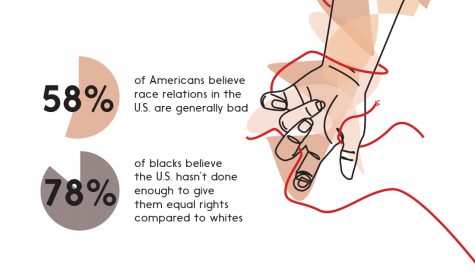
One way that West has facilitated race-based discussions is through MLK Day sessions, but attendance during that event is lower than average school days. The sessions present an opportunity for students to discuss and gain insight about many perspectives surrounding race. However, when they choose to skip school that day, they miss out on becoming more educated about racial bias and privileges. Additionally, their absence can show a lack of support and caring to peers.
During these discussions, however, many students like Kevin Yang ’20 have noticed that certain parts of history are often glazed over or skipped altogether.
“For example, the U.S. passed the Chinese Exclusion Act, which we never talked about [in American Studies]. It’s a very important part of our history because the Asian population is a big part of the United States,” Yang said. “When I did the MLK session, we talked about it, and virtually nobody knew about it.”
While discussing the difficulties that people of color have faced in the history of the U.S. is crucial. Hoeger-Pinto wishes more conversations would be centered around celebration of different cultures.
“Whenever we talk about [race], it’s like, ‘black—okay, we have [to talk about] ghettos and how they’ve been mistreated, or Latinos, we have to [talk about] gangs and immigration, but black people also have created jazz, and Latinos also have amazing festivals and dresses,” Hoeger-Pinto said. “I feel like if we talked about celebration more, then we’d all be more willing to engage in a conversation.”
Self-Segregation
When you walk into the cafeteria during lunch, you may find a group of Asian students huddled together in one corner, while some white students gather at a different table. This phenomenon, known as self-segregation, involves individuals’ preferences to be with others of similar backgrounds.
“Students want to be in a social group in which they feel the most comfortable,” Nash said. “Often that’s a racial group, because then you also share a cultural background.”
Hoeger-Pinto agrees, noting that she finds the most comfort being with other Spanish-speaking individuals. “I do find myself wanting to hang out with people who speak Spanish. Maybe that’s just because it’s like we already have something built in that’s really cool to be able to rely on,” Hoeger-Pinto said. “It’s this unique little thing … and it’s just really fun to be like, ‘Oh, you speak Spanish too.’”
Another factor that influences students’ environments is the extracurricular activities they participate in. Some individuals don’t have the opportunity to take part in any due to money or time barriers, which can make it difficult for them to interact with students with similar interests.
Lower income levels disproportionately affect black individuals, as shown by a study from the U.S. Bureau of Labor Statistics. The average household income was $70,448, while for blacks it was $48,871. A survey conducted by Pew Social Trends found that for children in families with an income of $75,000 and up, 84 percent participated in athletic activities, while families with incomes of $30,000 to $74,999 had a participation rate of 69 percent.
This leads to de facto segregation; segregation that results due to a difference in opportunities.
“To what degree can you stay after school for a long time? Do you have to catch a bus to get home? … If you take the bus, you can’t stay for play practice, and you can’t stay for additional practice time for music or you can’t stay for art club,” Henderson said.
As a result, this contributes to racial disparities among the activities and friendships from them, worsening self-segregation.
While self-segregation allows students to connect to others with similarities, it can limit the diversity of the environment they choose to place themselves into.
“Our default is familiarity. We may be missing out on some stuff if we always default to that,” Hoeger-Pinto said. A study by Society for Research in Child Development found that students who frequently interacted with others of different backgrounds had less racial prejudice than those who mainly spent time with individuals of similar backgrounds.
This subconscious occurrence is often reinforced, as race isn’t usually discussed in classes beyond social studies. However, Perez still feels that people of color aren’t mentioned in the curriculum beyond the oppression that white individuals caused them. This can lead to individuals feeling uncomfortable when discussing race, and avoiding stepping out of their comfort zone.
“I don’t think we have done a very good job both as a society and also as a school about thinking about and talking about how to have conversations across [racial] differences,” Henderson said. “And how to have them respectfully and meaningfully, and how to have them in a way that we can lean into the discomfort. We can feel the discomfort but also not let the discomfort overtake us or shut us down.”
However, Nash believes that the responsibility of diversifying areas often goes to students of color. Since white individuals make up the majority of the population nationally, minorities are the ones that have to spread out.
“If we’re trying to stop self-segregation, we’re effectively asking students of color to leave the comfort they find in their peers. So for white people, all day, every day they have that comfort,” Nash said. “What we’re doing when we look at self-segregation is asking the students of color to leave the one time of day or the few times a day that they’re with people of their color.”
Efforts Within West
The administration has been making an effort to help combat racial bias in the school.
A new trimester elective course, Ethnic Studies/Social Justice, will be offered next year and will help facilitate discussions covering many components about race.
“Students can figure out where we are, where we come from, where are we in this space, how identity privilege impacts ourselves in the world and at West,” Nash said. “So if a student is wondering, why is saying the N-word a big deal, or why do people think it’s a big deal? That would be the class to explore that.”
Having discussions about race during class encourages students to feel more comfortable about addressing their differences. Henderson believes that while some individuals are resistant to these conversations, most of them are open to it but don’t have to face it on a day-to-day basis.
“I think the majority of our population probably is just going through their day and they have the privilege of not having to think about it, [but] when confronted with it, they’re happy to talk about it,” Henderson said.
Additionally, the district conducts a student climate survey annually where students can share their reflections with administration to help guide training for teachers. Instructional rounds also provide a deeper insight into how the school can improve by allowing teachers and students to observe classes and develop strategies to become more inclusive. Through the instructional rounds, concerns like the difference in diversity in general education classes versus more advanced classes can be noticed.
“We’ve contracted with an organization called Equal Opportunity Schools and we brought them in to try to help us identify students who have been overlooked and then to actively recruit them and support them in our AP, honors, Kirkwood and PSEO classes,” Henderson said.
Dijon Genus ’21, an African-American student who participated in the rounds, noticed many trends like self-segregation. “One of the main things students and teachers said [was] that they were sometimes afraid to approach or interact with students and teachers of different races,” Genus said.
Although the school administration has made an effort to ensure teachers are working to create a more inclusive environment, student to student interactions haven’t been addressed as much. As a result, a program called Mentors in Violence Prevention is being created this year that focuses on bystander intervention. Students in the program will be educated about how to create a safer school environment.
“We’re also trying to build up the capacity of our students to address some of the concerns that we’ve seen because it can’t just be teachers and it can’t just be the administration,” Henderson said. “We are ultimately a very small percentage of the people who are in this building every day, [so] it’s got to come from the students as well.”
Your donation will support the student journalists of West High School. Your contribution will allow us to purchase Scholarship Yearbooks, newsroom equipment and cover our annual website hosting costs.
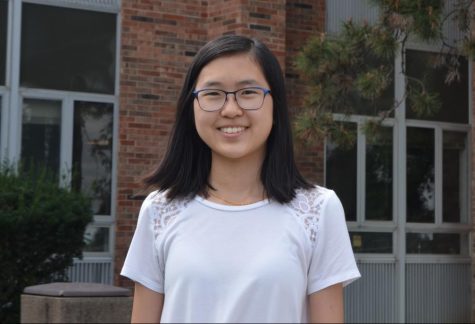
(she/her) Alice Meng is a senior at West High and this is her second year on staff. She is a copy editor and in her free time enjoys spending time with...

Jenna Wang is a senior at West High. It is her third year on staff and she is the Editorial Editor, Co-Copy Editor and a reporter for the print publication....
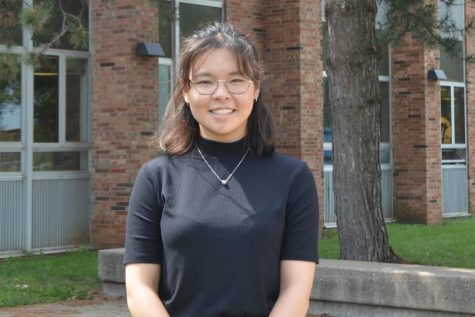
Selina Hua is a senior and this is her third year. She is the art editor and a designer on the West Side Story staff. She enjoys the rain, music, grapes,...

Aditi Borde is a junior at West High. This is her second year on staff and she is the photo editor and social media editor. Outside of the newsroom, Aditi...



